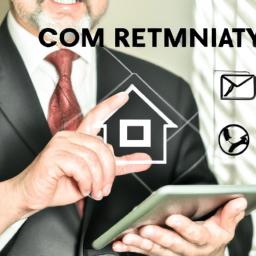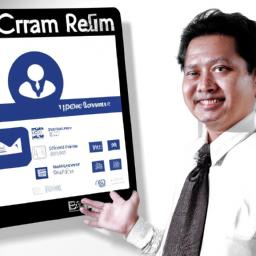Can You Use Trello as a CRM?
Introduction
In today’s fast-paced business environment, effective customer relationship management (CRM) is essential for success. But what if you could combine project management and CRM into one powerful tool? Enter Trello, a widely popular project management platform that has garnered attention for its versatility. In this article, we will explore the possibility of using Trello as a CRM solution and evaluate its potential.
Trello: A Project Management Powerhouse
Before we dive into the CRM aspect, let’s take a moment to understand why Trello has gained immense popularity as a project management tool. Trello is designed to simplify collaboration and streamline workflows. Its intuitive interface, consisting of boards, lists, and cards, allows teams to organize tasks, assign responsibilities, and track progress effortlessly. With features like due dates, file attachments, and comments, Trello empowers teams to stay organized and focused on achieving their goals.
The Significance of CRM in Business
CRM is the lifeblood of any business, enabling companies to build strong, lasting relationships with their customers. It involves managing customer interactions, tracking sales opportunities, and nurturing leads to drive growth. A robust CRM system helps businesses understand customer needs, personalize communication, and ultimately enhance customer satisfaction. In today’s competitive landscape, businesses cannot afford to overlook the importance of CRM in forging strong customer connections.
Now that we have set the stage, let’s delve into the question at hand: can you use trello as a crm? Join me as we explore the features of Trello, evaluate its suitability as a CRM, and uncover ways to maximize its potential in managing customer relationships.
Evaluating Trello’s Suitability as a CRM
A. Examining the Key Functionalities of a CRM System
To determine whether Trello can effectively serve as a CRM solution, it’s crucial to understand the key functionalities expected from a CRM system. A robust CRM should provide features such as contact management, lead tracking, sales pipeline management, customer communication history, and reporting capabilities. These functionalities enable businesses to efficiently organize and nurture customer relationships, ultimately driving sales and fostering customer loyalty.
B. Analyzing Trello’s Strengths and Limitations in Relation to CRM Requirements
Now that we have established the essential CRM functionalities, let’s evaluate Trello’s strengths and limitations in meeting these requirements. Trello’s flexible structure allows users to adapt its boards, lists, and cards to fit their CRM needs. By customizing labels and fields on Trello cards, businesses can capture and organize customer information effectively.
Trello’s task management capabilities can be harnessed to track sales opportunities, assign tasks to team members, and set due dates. Furthermore, Trello’s collaboration features facilitate seamless communication among team members, ensuring everyone stays informed and aligned on customer interactions.
However, it’s important to recognize that Trello was primarily designed as a project management tool, and its CRM functionalities might be more basic compared to dedicated CRM platforms. Trello lacks some advanced features like automated lead nurturing, in-depth reporting, and integrations with customer support systems. Additionally, managing large volumes of customer data and complex sales processes may become challenging within the Trello framework.
Before fully committing to using Trello as a CRM, it’s advisable to carefully assess your specific CRM requirements and evaluate whether Trello’s strengths align with your business needs. In the next section, we will explore how to leverage Trello’s existing features and integrate it with CRM tools to enhance its CRM capabilities.
Utilizing Trello as a CRM
A. Customizing Trello Boards and Lists to Fit CRM Needs
One of the key advantages of Trello is its flexibility and adaptability to various use cases. To utilize Trello as a CRM, you can customize boards and lists to align with your CRM requirements. Start by creating dedicated boards for different stages of your sales pipeline or customer journey. For instance, you can have boards for leads, prospects, and existing customers. Within each board, create lists that represent different stages or actions, such as “Contacted,” “Negotiating,” or “Closed.”
Customizing labels can also be beneficial in categorizing customers or leads. You can create labels based on criteria like priority, source, or industry. By visually organizing your boards, lists, and labels, you gain a clear overview of your CRM activities and can easily track progress.
B. Managing Customer Information Using Trello Cards and Labels
Trello’s cards serve as the building blocks of your CRM system. Each card represents a customer or lead and contains relevant information. Add details like contact information, interaction history, or specific requirements to the card’s description. Utilize Trello’s checklist feature to create action steps or tasks related to each customer. You can also attach files or links to cards for easy access to relevant documents or websites.
Labels play a crucial role in managing and filtering customer information. Assign labels to cards to indicate the status, priority, or any other relevant categorization. For example, you can use labels like “Hot Lead,” “Follow-up Required,” or “High-Value Customer.” This allows you to quickly identify and prioritize your CRM activities.
C. Leveraging Trello’s Collaboration Features for CRM Purposes
Effective CRM often involves collaboration among team members. Trello’s collaboration features enable seamless teamwork and communication. Assign team members to specific cards or tasks to delegate responsibilities and ensure everyone is on the same page. Utilize the comment feature to leave notes, updates, or discuss specific customer-related matters within the context of each card.
Furthermore, Trello’s integration with communication tools like Slack or Microsoft Teams allows for real-time communication and collaboration, enhancing the efficiency and effectiveness of your CRM efforts. By leveraging these collaboration features, you can foster stronger team coordination and provide excellent customer service.
In the next section, we will explore how Trello can be enhanced with CRM integrations, further expanding its capabilities as a CRM tool.
Enhancing Trello with CRM Integrations
A. Transforming Trello into a CRM with Third-Party Integrations
While Trello offers powerful project management features, it may not have all the functionalities of a dedicated CRM system out of the boHowever, the beauty of Trello lies in its ability to integrate seamlessly with various third-party applications, allowing you to enhance its capabilities and transform it into a versatile CRM solution. By integrating Trello with CRM tools, you can bridge the gap between project management and customer relationship management, creating a unified and efficient workflow.
One popular integration option is to connect Trello with Zapier. Zapier acts as a bridge between different apps, enabling you to automate tasks and data flow between Trello and your preferred CRM tool. With Zapier, you can automatically create leads or contacts in your CRM system when a Trello card is updated or moved to a specific list. This integration saves you time and effort, ensuring that customer-related data is seamlessly synchronized between Trello and your CRM.
B. Popular CRM Integrations for Trello
When it comes to CRM integrations, Trello offers a range of options to suit your specific business needs. Here are some popular CRM integrations available for Trello:
-
Salesforce: Integrate Trello with Salesforce to leverage the power of a leading CRM platform. Sync customer data, track sales opportunities, and streamline collaboration between teams.
-
HubSpot: Connect Trello with HubSpot to seamlessly manage customer interactions, track deals, and automate processes. Benefit from a comprehensive CRM suite while enjoying Trello’s intuitive project management interface.
-
Pipedrive: Combine the simplicity of Trello’s task management with Pipedrive’s robust sales CRM. Sync contacts, track deals, and gain valuable insights into your sales pipeline.
With these and many more CRM integrations available, Trello becomes a powerful CRM tool that aligns project management and customer relationship management seamlessly.
Stay tuned as we dive into the practical aspects of using Trello as a CRM and explore how you can customize Trello to fit your specific CRM needs.






